Turrets on Hadrian’s Wall
The original design for Hadrian’s Wall required a continuous ‘curtain’ wall and V-shaped ditch to run 80 Roman miles (117.5km) from Wallsend in the east to Burgh-by-Sands in the west. About 160 turrets were built two to every Roman mile (about 1.48km) along it, providing vantage points to monitor the landscape.
Pairs of turrets were positioned equidistantly between small forts, known as milecastles, where garrisons of up to about 30 soldiers guarded gates that allowed travel through the Wall. Shortly after work on the Wall started, large forts such as Chesters were added to the line of the Wall to house greater numbers of soldiers.
Items such as gaming counters and cooking utensils have been found in turrets, showing that they provided shelter where small groups of soldiers could cook, sleep and relax during their periods of keeping watch and patrolling the Wall.
Using a numbering system introduced in 1930, milecastles are numbered 1 to 80 from east to west. Each pair of turrets takes the number of the nearest milecastle to the east, ‘a’ for the eastern turret and ‘b’ for the western one.
Black Carts and the Wall
Black Carts follows the usual turret design, with Hadrian’s Wall forming its north wall. A small door at the base of the south wall gave access to a ground-floor room and there was possibly a ladder to the floor above. In the threshold stone at the entrance, a pivot hole in which the door was hung and two grooves for the uprights that formed the door jambs are still clearly visible. During excavations, evidence of a hearth for cooking and keeping warm, and fragments of millstones for making flour were discovered.
Internally the turret measures 3.45 by 3.4 metres, and it survives up to 11 courses high where it is recessed into Hadrian’s Wall. The upper sections of the turret walls do not survive, but it is likely that there was access to a wall-walk. Above that, the turret had either an open platform or a roof.
Two short sections of Hadrian’s Wall immediately east and west of the turret are a little thicker than the rest of the Wall. This is because some turrets were built before the Wall itself, and were made with these short ‘wing’ walls ready to be incorporated within it. Initially, the Wall was planned to be 3 metres wide. However, after construction began, the builders were ordered to reduce its thickness to 1.8 metres. This meant that when the Wall was connected to Black Carts Turret, parts of the wing walls were left exposed.
Who built Black Carts Turret?
The three legions stationed in Britain built Hadrian’s Wall: the 20th ‘Valeria Victrix’, based at Chester, the 6th ‘Victrix’, based at York, and the 2nd ‘Augusta’, based at Caerleon. They had a pool of 15,000 men to draw upon, although not all of these would have worked on the Wall at the same time.
Each legion was divided into smaller units, known as cohorts, and then subdivided into centuries of around 80 soldiers, commanded by a centurion. The centuries were allocated sections of wall to build.
Pioneering archaeologist John Clayton first excavated at Black Carts in 1873, and among other objects he found three stones inscribed with soldiers’ names. They are among many such stones, known as centurial stones, which record the small units of men (each under a centurion) who built particular sections of Hadrian’s Wall. One of the three found here was inscribed with the letters C ANTONI FELIC, an abbreviation of CENTURIA ANTONIUS FELICIS, which translates as ‘the century of Antonius Felix built this’.
Clayton took the centurial stones to his home at nearby Chesters, and they are now displayed at Chesters Museum together with many others Clayton found.
The Wall nearby
Chesters Fort was built about 1.8 miles (2.8km) east of Black Carts Turret when large forts were added to the frontier, at the same time that the Wall was narrowed. It was home to a cavalry garrison, who would have patrolled the river valley and protected the nearby bridge over the river North Tyne.
About 1½ miles to the west is the unexcavated Carrawburgh Fort and a temple devoted to the god Mithras.
-
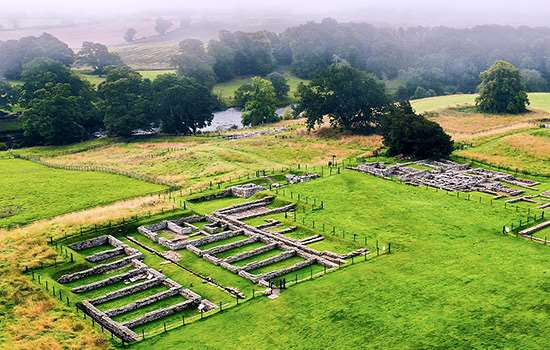
Visit Chesters Roman Fort
Riverside Roman fort and bath house with period-piece museum
-
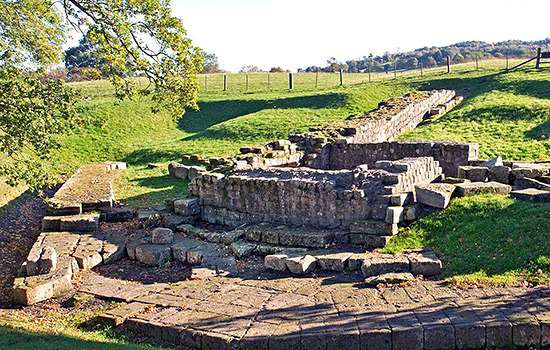
Visit Chesters Bridge Abutment
Close to Chesters Roman Fort are the remains of a bridge which carried Hadrian's Wall across the North Tyne. Visible on both river banks, they are most impressive on the eastern side.
-
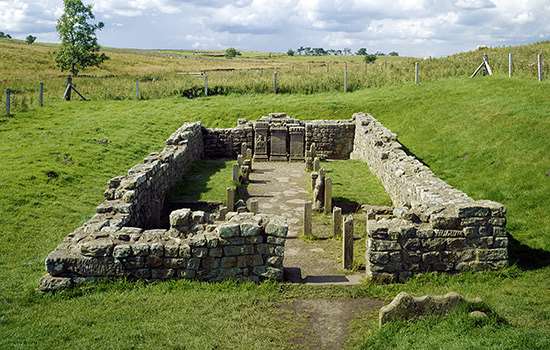
Visit Carrawburgh Roman Fort
One of 16 forts along Hadrian’s Wall, Carrawburgh once housed about 500 soldiers responsible for defending the frontier. Nearby stands a fascinating temple to the god Mithras, with facsimiles of altars found during excavation.
More about Hadrian’s Wall
-
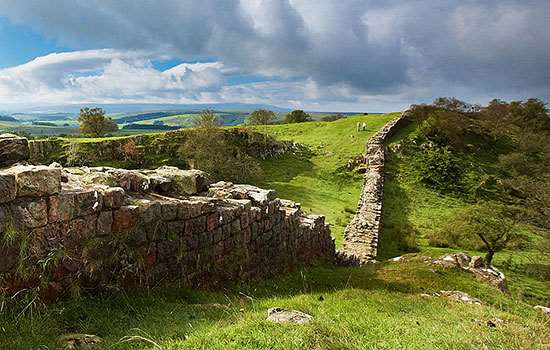
Hadrian’s Wall: History and Stories
Discover the histories and stories associated with English Heritage’s sites along Hadrian’s Wall, the Roman empire’s north-west frontier.
-
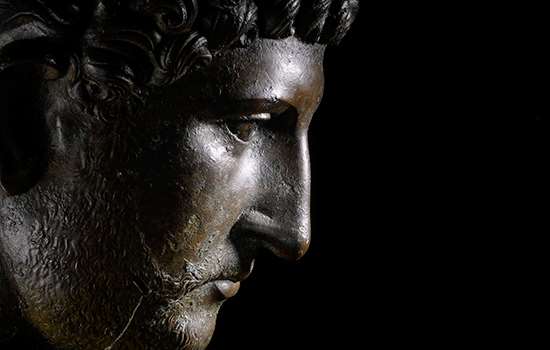
Emperor Hadrian
Emperor Hadrian focused on securing the empire’s existing borders, and Hadrian’s Wall was the most impressive statement of this policy.
-
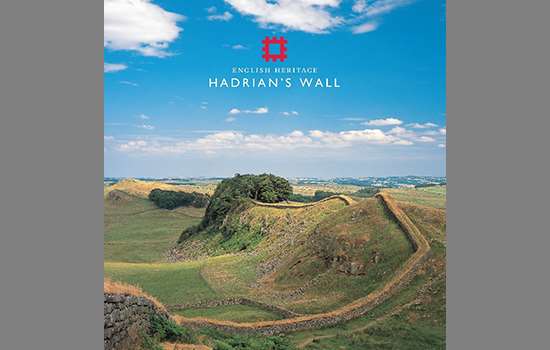
Buy the guidebook to Hadrian’s Wall
The English Heritage guidebook to the Wall provides maps, plans and tours of all the key sites, as well as a history of the Wall and its forts.
-

MORE HISTORIES
Delve into our history pages to discover more about our sites, how they have changed over time, and who made them what they are today.
